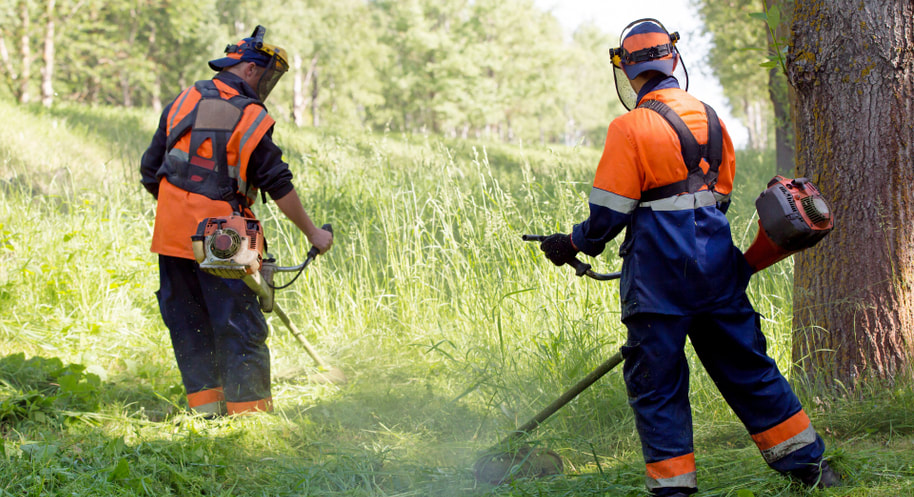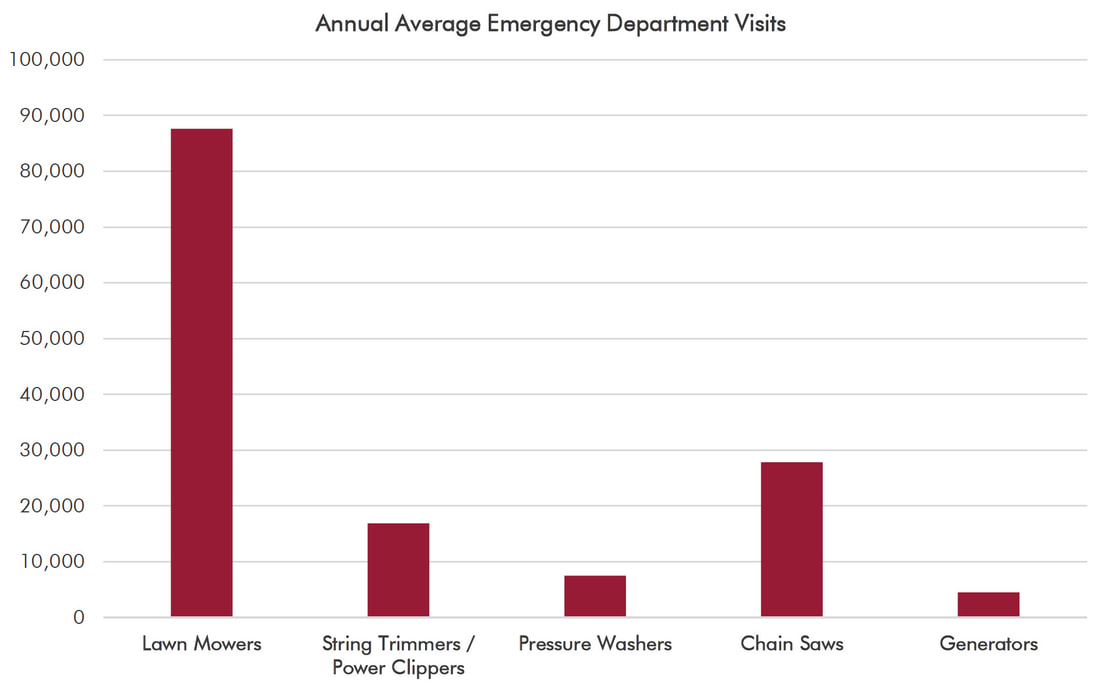|
With the arrival of warmer weather, many organizations have transitioned to summer operations, including the maintenance of parks and public corridors, opening of seasonal recreation facilities, roadway maintenance and other capital related projects. Often, much of the work to be completed is assigned to temporary or part-time seasonal employees that may not have extensive experience performing the tasks assigned or be familiar with the equipment to be used. In addition, while the summer season provides a welcome respite from cooler weather, there is often a tendency to sacrifice the use of proper personal protective equipment (PPE) for the sake of comfort when working in the heat. The risks associated with seasonal work can be significant. There are a few key areas to review, that will improve the safety of our employees: Safe operation of landscaping equipment Thousands of people are injured each year while using landscaping equipment, as highlighted in the graph below. The vast majority of these injuries are preventable, if we follow a few basic steps:
Manage heat exposure to avoid heat-related illness It is easy to lose track of time while working in the sun and heat. As the temperature climbs, so does the risk of heat-related illness, which includes heat stroke, heat exhaustion, heat cramps and heat rash. OSHA’s ‘Water. Rest. Shade.’ campaign provides useful tools to help identify and mitigate the risks to employees from heat exposure. The impact of hot weather is magnified when working around large equipment, which can generate significant heat, and roadways. OSHA recommends the following best practices:
Be alert and aware of your surroundings Working outdoors all day does present some unique risks, which include:
Having a plan in place to mitigate these situations, can greatly improve the safety of employees while working outdoors.
Comments are closed.
|
Categories
All
|
||||||||||||||||||
Contact220 Morris Avenue, Suite 340
PO Box 65608 Salt Lake City, UT 84165 (801) 486.1373 (877) 759.9935 |
Support |
© COPYRIGHT 2024. ALL RIGHTS RESERVED.
|



